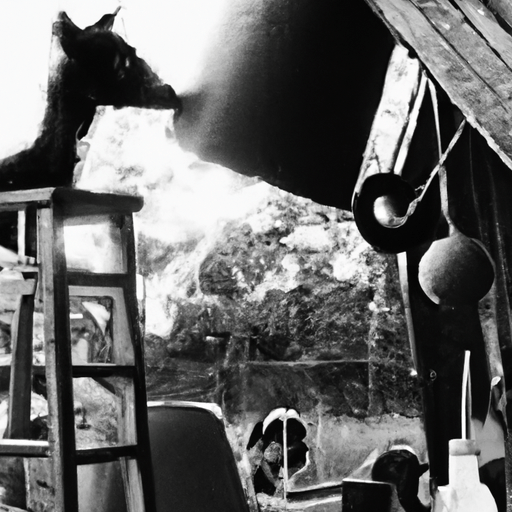So, you’re interested in off grid living? That’s awesome! There’s something really fulfilling about being self-sufficient and living off the land. And if you’re considering it, I’m guessing you might be open to the idea of raising your own animals for food. Well, let me tell you, raising a pig can be a great option for off grid living. Not only do pigs provide a sustainable source of meat, but they can also help with waste management and even serve as companions.
Now, you might be wondering, how do you raise a pig? Well, lucky for you, I’m here to guide you through it. From choosing the right breed to setting up their living space, I’ll cover all the important aspects. You’ll learn about the different feeding options, how to keep your pig healthy, and even how to make the most out of every part of the animal. Trust me, by the end of this article, you’ll have all the knowledge you need to successfully raise a pig for off grid living.
So, if you’re ready to dive into this exciting venture, stay tuned. You won’t want to miss out on all the valuable information coming your way. Whether you’re a novice or have some experience with farming, this ultimate guide will provide you with everything you need to know. Get ready to embark on the journey of raising a pig and experiencing the rewards of off grid living.

The Ultimate Guide: How to Raise a Pig for Off Grid Living
Understanding Off Grid Living
Defining Off Grid Living
Off grid living refers to a lifestyle in which individuals or families choose to disconnect from the traditional power grid and other public utilities. It involves generating your own electricity, sourcing your own water, and being self-reliant for basic necessities.
Advantages and Challenges of Off Grid Living
While off grid living offers many advantages, such as decreased reliance on fossil fuels and reduced monthly bills, it also presents its own set of challenges. You must be prepared to handle the responsibilities that come with living off the grid, including sourcing your own food and water, managing waste, and ensuring a sustainable lifestyle.
Self-Sufficiency and Sustainability
Off grid living promotes self-sufficiency and sustainability, allowing you to reduce your carbon footprint and live in harmony with nature. By raising your own food, such as pigs, you can have a direct impact on your food security and reduce your dependence on external resources.
Living in Harmony with Nature
Living off the grid gives you the opportunity to connect with nature on a deeper level, as you rely on natural resources and sustainable practices. It allows you to appreciate the simplicity of life and the importance of living in balance with the environment.
Why Choose Pig Raising for Off Grid Living
Benefits of Raising Pigs for Off Grid Living
Raising pigs is an excellent choice for those living off the grid, as it offers numerous benefits. Firstly, pigs are incredibly efficient in converting feed into meat, making them a sustainable source of food. Secondly, they can be used for various purposes on a farm, such as tilling the soil and turning compost. Lastly, every part of the pig can be utilized, minimizing wastage and maximizing resources.
Pigs as a Sustainable Food Source
Pigs are considered one of the most sustainable sources of meat, as they can be raised and fed on organic and locally sourced food. By raising pigs for meat consumption, you have full control over their diet and living conditions, ensuring the quality and taste of the meat.
Pigs for Farming and Homesteading
In addition to providing meat, pigs can also be valuable assets on a farm or homestead. They are excellent at tilling the soil, helping to prepare land for planting crops. Additionally, pigs can be used to turn compost, contributing to the sustainability of your farming practices.
Utilizing All Parts of the Pig
One of the standout benefits of raising pigs is the ability to utilize every part of the animal. From the meat, to the organs, to the bones and hide, there are countless ways to make use of the pig’s entire body. This ensures that nothing goes to waste and maximizes the resources available to you.
Pigs for Generating Additional Income
Apart from providing sustenance for your own needs, raising pigs can also be a source of additional income. You can sell surplus meat or even breed and sell piglets to other homesteaders or farmers. This can contribute to your financial independence and help sustain your off grid lifestyle.

Preparing for Pig Raising
Understanding the Commitment
Raising pigs requires a significant commitment of time, effort, and resources. It is essential to understand the level of responsibility involved in caring for these animals, as they require daily care and attention.
Obtaining Adequate Knowledge and Skills
Before embarking on pig raising, it is crucial to educate yourself about their needs, behavior, and health requirements. Familiarize yourself with pig husbandry practices and attend workshops or consult with experienced pig farmers to gain the necessary knowledge and skills.
Creating a Budget
Raising pigs involves certain financial implications, such as acquiring the pigs, constructing suitable housing, and providing food and veterinary care. Creating a budget will help you determine the financial resources required for a successful pig-raising venture.
Gathering Necessary Equipment and Supplies
To raise pigs effectively, you will need various equipment and supplies. These may include feeding troughs, water containers, fencing materials, and tools for maintenance. Ensure that you have all the necessary resources before bringing your pigs home.
Selecting the Right Pig Breed
Factors to Consider in Choosing a Pig Breed
When selecting a pig breed for off grid living, there are several factors to consider. These may include the breed’s size, growth rate, temperament, and suitability to your climate and environment. It is crucial to choose a breed that aligns with your specific needs and goals.
Common Pig Breeds for Off Grid Living
There are numerous pig breeds suitable for off grid living. Some popular options include the Large Black, Tamworth, Gloucestershire Old Spot, and Berkshire. These breeds are known for their hardiness, foraging ability, and adaptability to outdoor living.
Matching Breed Characteristics to Your Needs
Evaluate your specific requirements when choosing a pig breed. Consider factors such as the availability of grazing land, climate conditions, and the purpose for raising pigs. Matching the breed’s characteristics to your needs will increase the likelihood of a successful and sustainable pig-raising experience.
Building Suitable Pig Housing
Designing and Constructing Pig Pens
When it comes to pig housing, it is essential to design and construct pens that cater to the needs of your pigs. Consider factors such as pig size, ventilation, and drainage. Strong and secure fencing is also crucial to keep your pigs contained and protected.
Providing Shelter and Protection
Pigs require shelter from extreme weather conditions, such as excessive heat or cold. Provide them with a well-insulated structure that shields them from the elements and allows for proper air circulation. Additionally, ensure that the housing is predator-proof to safeguard your pigs.
Creating Adequate Space for Pigs
Pigs need sufficient space to roam, root, and exercise. Provide them with ample grazing land and consider rotational grazing if you have limited space. Allowing your pigs to move freely promotes their physical and mental well-being.
Choosing the Right Flooring and Bedding
Select flooring options that are comfortable for your pigs and easy to clean. Concrete, dirt, or straw bedding are popular choices, as they provide proper drainage and a comfortable resting area for the animals. Regularly clean and replace bedding to maintain cleanliness and prevent the buildup of waste.
Creating a Balanced Diet for Your Pigs
Understanding Pig Nutritional Needs
To ensure the health and optimal growth of your pigs, it is crucial to understand their nutritional needs. Pigs require a balanced diet consisting of protein, carbohydrates, fats, vitamins, and minerals. Consult with a veterinarian or livestock nutritionist to formulate an appropriate pig feed.
Formulating a Pig Feed
Creating a pig feed involves combining various ingredients to meet their nutritional requirements. Common ingredients include grains, legumes, fruits, vegetables, and supplements. Balancing the feed according to the pig’s age, weight, and growth stage is essential for their overall well-being.
Incorporating Natural and Locally Sourced Food
Off grid living emphasizes sustainability, and incorporating natural and locally sourced food in your pig’s diet aligns with this principle. Utilize food scraps, garden produce, and forage to supplement their feed and reduce waste.
Feeding Practices and Schedule
Establish a feeding routine for your pigs that includes regular feeding times and appropriate portion sizes. Avoid overfeeding, as it can lead to health issues. Observe your pigs’ behavior and appetite, and make adjustments to the feeding schedule or ration as needed.
Establishing a Water Supply System
Importance of Clean and Accessible Water
Water is crucial for the health and well-being of your pigs. Ensure they have constant access to clean and fresh water. Water aids in digestion and regulates body temperature, and it is essential for maintaining overall hydration.
Installing Water Sources and Containers
Place multiple water sources throughout the pig housing area to ensure accessibility. Consider using automatic waterers or nipple drinkers that are easy to clean and maintain. Regularly check and clean water containers to prevent the growth of bacteria or contaminants.
Maintenance and Monitoring of Water Supply
Regularly monitor the water supply to ensure that there are no blockages or leaks. Keep an eye on the water consumption of your pigs, as unusual drinking patterns may indicate health issues. Maintaining a reliable water supply system is essential for the well-being of your pigs.
Ensuring Proper Health and Hygiene
Regular Veterinary Care and Vaccinations
Proactive veterinary care is crucial for the health of your pigs. Schedule regular check-ups and vaccinations to prevent the onset of diseases and address any health concerns. Work with a veterinarian experienced in pig healthcare to establish an appropriate healthcare plan.
Identifying and Managing Common Pig Diseases
Being aware of common pig diseases and their symptoms is essential for effective disease management. Regularly inspect your pigs for any signs of illness, such as loss of appetite, coughing, or abnormal behavior. Promptly address any health issues to prevent the spread of disease and ensure the well-being of your pigs.
Maintaining Cleanliness in the Pig Environment
Pigs are naturally messy animals, and maintaining cleanliness in their environment is crucial to prevent the buildup of waste and the proliferation of harmful bacteria. Regularly clean the pig housing area, remove waste, and provide fresh bedding. Implementing proper waste management practices will contribute to a healthier and more hygienic environment.
Implementing Parasite Control
Parasite infestations can negatively affect the health of your pigs. Implement a parasite control program that includes regular deworming and treatment for external parasites, such as lice and mites. Consult with a veterinarian to develop a suitable parasite control plan for your specific pig-raising setup.
Conclusion
Summary of Key Points
Raising pigs for off grid living offers numerous benefits, including self-sufficiency, sustainability, and the ability to utilize every part of the animal. However, it requires commitment, knowledge, and proper planning to be successful.
Benefits of Raising Pigs for Off Grid Living
Raising pigs provides a sustainable food source, opportunities for farming and homesteading, and the potential for additional income. It allows you to live in harmony with nature and take control of your food security.
Final Thoughts on Pig Raising for Self-Sufficiency
Raising pigs for off grid living can be a rewarding and fulfilling endeavor. By understanding the necessary steps and implementing proper care and management practices, you can raise healthy pigs and enjoy the fruits of your labor. Remember to continuously learn and adapt, as the journey of pig raising is a constant learning experience.




